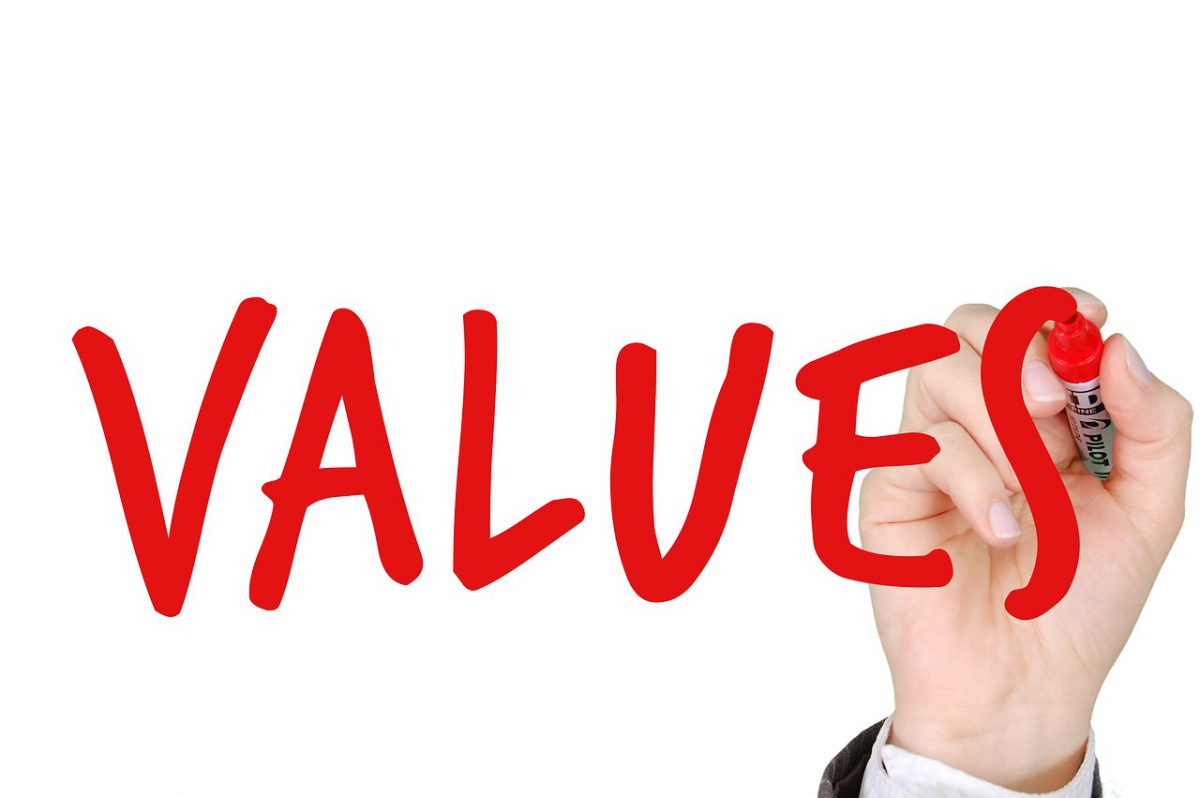
There is something about overhead that is so toxic to major gift officers that they literally run away from it every time it gets close to them.
And it’s not only MGOs that are repulsed by the topic. Managers and leaders feel pretty squeamish about it too. You bring up the subject and you can see their bodies tighten, as they get ready to defend this nasty but necessary thing.
I was in a meeting recently with some managers where the “O” word came up. You would think we had just moved into the ring of a major boxing match. Goodness. Some managers were defensive. Others quietly retreated into their spreadsheets. Still others moved into some language about “We’re doing the best we can to keep costs down.”
So I stepped into this swamp with the following question: “What do you think donors think about overhead?” And we were off on a fun journey that mixed one cup of philosophy with another cup of reality and ten pounds of anxiety.
The core assumption in this meeting, and in non-profits in general, is that major donors do not like nor will they pay for overhead. I think this is wrong for several reasons.
- Overhead is a good thing. What?! A good thing? Yep. And we need to start talking it up. No more of this sniveling, shifty, wandering into a dark corner about this subject. We need to embrace it for the good that it is.
- Overhead is necessary. Here is what is so funny about this topic. If you didn’t have overhead you wouldn’t have anything. It is still mind blowing to me to sit in a meeting with seemingly intelligent people and have them imply that overhead is bad, must be pushed down to levels that make it impossible to run the organization and must be hidden in financial reports so ill-informed donors can’t find or discern where they are or how much they are. This is truly comical. I remember a meeting I attended in which I got into quite a heated debate with a top finance guy on the need for overhead. You should have heard the positions he was taking. It was like we were on a different planet. I would say, “But, Bill (not his real name), you just cannot run this organization on the 10% you are saying you run it on. Your costs are really in the 20-24% range. Why don’t you just come out with it?” “Because the donors won’t pay for it, Richard. That’s why!” And we went round and round. Here’s a guy, not unlike hundreds I have met, who (a) really believes overhead is nasty, (b) can’t find a way to tell the truth about it, and (c) is trapped in the circular argument he has created. I even made the following argument: “OK, Bill, let’s eliminate this overhead item and that overhead item, etc. Now, can you run the program?” He had to admit he couldn’t, which made my point. Overhead is a necessary and needed part of pulling off the mission of the organization. Why is it that we can’t get this in our heads?!!
- The non-profit world and the watch-dogs have perpetuated a misconception about overhead. There are many people out there, non-profit leaders and self appointed watch-dogs, who find virtue in propagating the idea that overhead under 20% is right up there with sainthood. Unbelievable. And for many of these people, when you look under the blankets in their organizations, the real number is far higher than what they are publishing – they simply have adopted sophisticated legal ways of packaging it all. I wouldn’t say it’s ethical – but it is legal. This just causes more pressure on the sector and keeps donors in the dark on the subject. There are a few glimmers of light out there on this subject with some leaders who are showing courage by speaking out and taking action. But it is slow in coming.
Let me suggest three things you can do in 2013 to change this overhead discussion from a negative one to one that is logical, makes sense and is warmly embraced by your donors:
- First, get YOUR head right about this issue. The way I worked through this topic to get to a balanced place was to look at how much effort it takes to make a product or make profit in a commercial company. I also looked at how much effort it takes to get anything done. What I mean here is that when you start to examine the relationship of effort put out to achieve a result, you begin to understand that it takes far more effort to get a result. As I have examined this in a number of areas of life I finally settled on the fact that the relationship of cause and effect – of effort to make something happen vs. achieving the result – was a lot larger than I had thought. If all you had to do in life was make a 10% effort and get a huge result, life would be easy. So, this is how I did it. You might have a different path, but stop and think about this a bit. And ask yourself the question – what DOES it take to get the program delivered in a non-profit? And how important a role is overhead to making program happen? Your honest answer will help you land in a better place.
- Realize that major donors can understand how overhead is a critical part of delivering program. More and more, enlightened donors are really getting it in this area. They know what it takes to get things done. Many major donors are business people and entrepreneurs. They know what they went through to be successful. They know what overhead they had to have to make things work. They really do understand. But YOU need to talk sensibly about this. And that is why…
- You can make a difference in this area. If you start talking about this in a calm, professional and sensible way, you can start to change this around as your donors begin to understand that delivering life changing help to people and to our planet will not happen without these basic support systems in place. Another way you can make a difference here is to place the overhead costs, on an allocated basis, as part of the program costs. Too many MGOs are presenting programs to donors without the two overheads attached – Overhead #1 is the overhead of the program itself. Overhead #2 is the allocated portion of overall organizational overhead the program should carry. Both of these should be attached to the program as you present it to donors funding. This makes sense. And, it’s right thing to do.
I love overhead! And you can to. It is the power – the driver that makes the good happen. It is the fuel in the engine. What a great thing! Start working to really believe this and help your donors believe it as well. It will make such a difference to them, to you, to your organization and to the non-profit world we are all operating in.
Richard







I couldn’t agree more Richard – no self respecting business runs without effective infrastructure. Major donors should be highly critical of businesses that show unrealistic overheads. Delivery of meaningful results with an appropriate level of infrastructure for the size and scope of the work is really the more perceptive questions to ask.
I love this idea. Tired of trying to hide real and necessary costs in grants and reports!
I agree with this. My struggle is how to allocate salary, particularly my salary as Executive Director. Arguably, everything I do is working toward the mission. With that argument, should I split salary between all programs? And, what about the Executive Assistant? Her salary should be heavy on admin, but she works on programs, too. I have not received a straight answer on this one. Any tips?
Lindsay, I would allocate your salary, the salary of your admin and your operating expenses to program. But allocate them proportionately, i.e. using the same percentage that an individual program is to total program…
Richard, thank you for the reply! I appreciate it. I’m happy with this response and will make some changes as you suggest. When you suggest using the same percentage that an individual program is to total program, do you categorize that by expense? If so, should I look at the last three years and do an average? Sorry to make this complicated. I just want to do the right thing. We are a virtual nonprofit, so staff salaries (4) make up most of the overhead along with BOD meetings for travel, food, etc. I truly appreciate your help. I’m been grappling with this since I came on board a little over a year ago. Thanks!
Not sure I understand your question. But the way to do it is this. If program “A” expense is 10% of total program expenses then program “A” needs to carry 10% of overhead expenses. And you do this allocation every year for every budget. If this doesn’t answer your question, please write me at rperry@veritusgroup.com so we can continue the dialogue. Thanks.